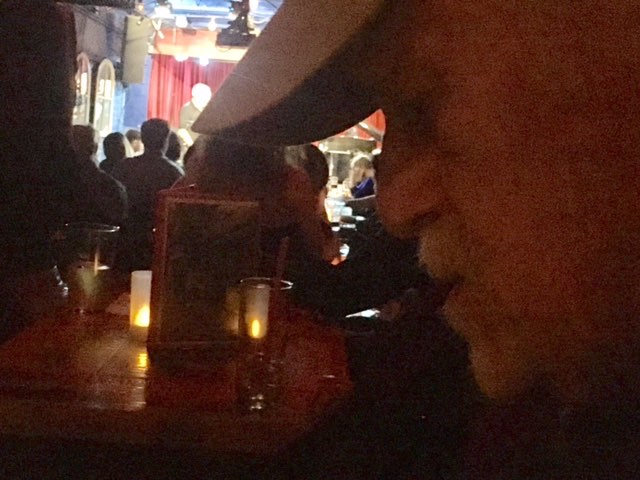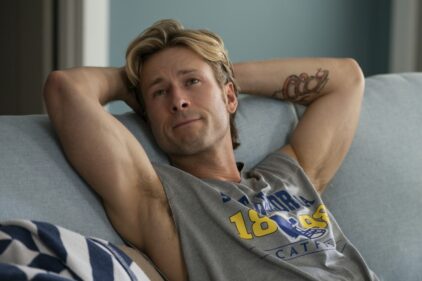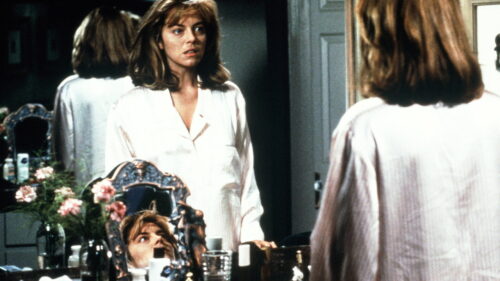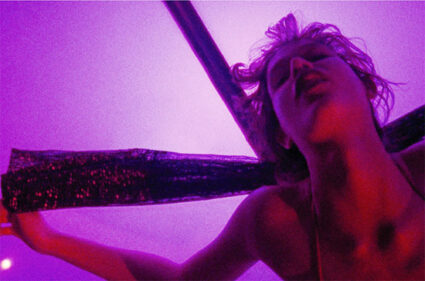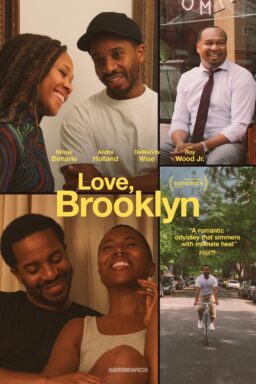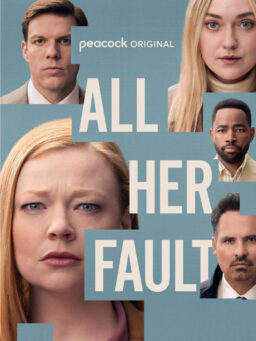My dad Dave Zoller is turning 75 this December, but I’ve only recently begun to appreciate how similar we are, down to the gestures and sounds that we make when we’re appreciating our favorite kinds of art. This is most obvious when we’re listening to jazz or watching films together. Jazz is my dad’s area: he’s a pianist and composer who still performs at venues in my hometown of Dallas and writes charts for college jazz bands. Movies are my area.
I’m notorious for chuckling at seemingly odd moments during screenings, when nothing obviously funny is happening. Afterward, people who don’t know me express bewilderment at the laughter, especially if the movies aren’t comedies. I’ve made appreciative noises during tragedies if they’re well done. Sometimes people think I’m laughing in derision. That’s rarely the case. It’s an involuntary reaction that comes from realizing, in the moment, what a movie is doing, or trying to do, or perhaps making a connection between that film and some other film that might have influenced it. My dad does the same thing when he listens to jazz; I guess you could call it an “Ah-hah” reaction, although it often comes out more like “Hah,” or “huh,” or “hmm.”
We have many of our best conversations after watching movies or listening to music; he’ll compare a director’s style to a musician he knows, or I’ll try to draw parallels between the music he likes and a filmmaker who seems to be working in a similar vein. This sounds as if it would be a recipe for non-connection – monologues occurring along parallel tracks, rarely converging – but you’d be surprised how well it works for us.
He’s visiting me in New York right now with his girlfriend Elizabeth. We went to see the saxophonist George Garzone play with a quartet Friday night at the Cornelia Street Cafe in the West Village with my daughter and their friend Trina. Leo Genovese was on piano, Peter Slavov on bass, Francisco Mela on drums; I mention those names not because they mean anything to me, but in case somebody reading this wants to know the names of the other players.
Whenever I see live jazz with my dad, or when I go to watch him play with his own bands in Dallas, I take a notebook with me, and draw or write notes to myself while the musicians are playing; something about seeing live music sets my mind to racing. This time, though, I spent most of the evening watching my dad watch the band. It was as if I was looking in a mirror.
Sometimes he’d stare straight ahead at the musicians, nodding in time to the music, clapping after solos. Other times he’d go into a reverie, head and shoulders turned in profile to the stage, hands folded in front of his face or splayed down on the tabletop. At one point, during an especially long saxophone solo by Garzone, he closed his eyes, and I wondered if he’d nodded off; but no, he was just concentrating on the music. His face was a blank for a while, and nearly immobile. Then finally the corners of his mouth pulled up in a smile, and he started laughing in delight.
My son calls this The Zone when I do it during films. As in, “Dad’s in The Zone.”
All the shared gestures and noises were in play last night. My daughter remarked on this afterward as we were figuring out whether to go home or stay out a bit longer (I opted to go home because my dad’s even more of a night owl than I am, and I can’t keep up with him). “The more time I spend with him,” I told her, “the more I wonder how much of who I am is me, and how much is him, and how much of a difference there really is when you get right down to it.”
Seeing jazz with my dad in New York is a learning experience, at times a bit of a test, because I’m not in my zone, I’m in his. When he visits me, he seems to prefer going to see a fairly abstract, post-1960 sort of jazz, the kind that non-jazz fans tend to dismiss as being one step removed from chaos or sheer noise. I don’t know enough about Garzone to say if he always plays that sort of music, but he definitely was playing it when we saw him at the Cornelia Street Café. When we went to see the late drummer Paul Motian perform with six (or was it seven?) other musicians at Village Vanguard not too long before his death, it was a similar kind of performance. Motian seemed to be drumming at deliberate cross-purposes to the other musicians, to create effects that harmonious collaboration couldn’t inspire. Sometimes when he’d come in near the tail-end of another player’s solo, instead of gradually guiding the player back into the mainstream of the tempo he’d momentarily left behind, he’d bang a drum really hard, just once, suddenly, so that it sounded like a gunshot, and you’d see the other player flinch a bit, or grin (perhaps because he had been playing with Motian long enough not to flinch anymore when he did that). Sometimes Motian’s drumming reminded me of a man kicking the tires of a car before deciding to buy it. Other times it evoked an old trapeze master throwing objects at a younger man on the high wire to see if he could make him fall off.
When I was in my twenties I’d get impatient during such performances, because a lot of the time you have to really spelunk to find the melody in what the musicians are doing. I’ve gotten used to it, though, and now I’m at the point where I can honestly say that I enjoy it — though not as entertainment or escapism, because it requires concentration as well as a willingness to go with wherever the music is taking you instead of silently fuming that it’s not what you wanted or expected. It’s an exercise in listening, thinking and drawing connections that’s similar to what I do when I watch movies, but much harder for me because I lack a broad base of jazz knowledge and am working intuitively, without the aid of images or a story to keep my mind on track. I suppose that in other forms of popular music, and in older or more accessible varieties of jazz, the melody would be the closest equivalent to a storyline or a three-act structure in a commercial film. But as I’ve indicated, you don’t get too much of that sort of thing when a guy like Garzone is onstage.
“What’s this number?” I whispered to him a couple of minutes into the band’s opening tune. “This is ‘Crescent,’ he said. “It’s the first track on the John Coltrane album of the same name.” I’ve heard “Crescent” but didn’t recognize it here, at least not at first, amid the pulverized shards of melody; when the familiar notes finally coalesced, it reminded me of a scene in a Werner Herzog documentary that I’d just reviewed, “Into the Inferno,” where a group of archeologists sifted through a dig site near an active volcano looking for shards of ancient humans. The leader would hold up a tiny jagged sliver that I would have mistaken for a rock and say “Tibia” or “femur.”
The second number was even more elusive. “I don’t recognize this either,” I whispered.
My dad chuckled and whispered, “This is called ‘Let’s Think About Playing ‘Body and Soul’…No, Let’s Not Go There…Then Again…Oh, No, We Shouldn’t…Then Again, Why Not?’”
“So, ‘Body and Soul,” I said.
“Yes,” he laughed.
The next number stumped him. “I think it’s a Coltrane tune, but I couldn’t tell you which one,” he said. “Garzone is one of the prime exponents of this kind of music.”
“I had the thought a couple of moments ago that I am listening to abstract art,” I said.
“That, too,” he said.
The band played a couple more Coltrane tunes. Well, not just performing them; pulling them apart, or folding them back on themselves, or tearing them into confetti and tossing them in the air. At various points, Garzone’s sax made sounds that evoked microphone feedback, a didgeridoo, and a shortwave radio.
“That last one was kind of a paraphrase of a Coltrane tune,” he said. “This one here is a tune I’ve played a bunch. It’s called, ‘I Want to Talk About You.”
Then the band played “Misty,” a crowd pleaser. But of course you couldn’t recognize it as such right away. This “Misty” was itself wreathed in mist, its shape only faintly discernible. When Garzone allowed a familiar phrase to peek through — “I’m as helpless as a kitten up a…[Honk! Blat!] – the audience murmured in pleasure. “Everyone seems so grateful for a scrap of melody,” I said. “Well, there you go,” dad said.
Two more Coltrane originals followed. During one of them, the band repeatedly seemed as if it was about to trail off into silence, only to roar back in and keep going for a bit longer. My dad laughed a bit harder every time they pulled this blasé fake-out, as if appreciating the nerve of a comedian who kept repeating a punch line over and over until it stopped being exasperating and became funny again.
“That second tune was on ‘Live at Birdland,’” my dad said. “At the end, Coltrane played a cadenza that was twice as long as the rest of the piece!”
Afterward, Elizabeth talked about a frustrating friend who was happy to listen as she talked about her own life but would never volunteer anything personal about herself. Dad said, “She’s not willing to accept you as a friend unless you accept her as a mystery.”

